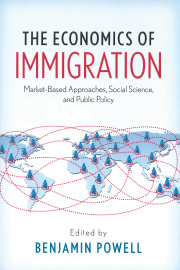Those who think the $787 billion “stimulus” bill will chase the blues from the economy should look at Japan’s experience in the 1990s, where a succession of interest-rate cuts and Keynesian spending initiatives did little but prolong the downturn. The result was a decade of lost growth.
The United States is facing a financial crisis remarkably similar to the one that struck Japan. We would be wise not to repeat the same mistakes. In both cases, low interest rates helped fuel a financial bubble and inflate stock and real estate prices. The bubbles eventually burst, pummeling stock and real-estate values.
So far the magnitude of the U.S. recession pales in comparison to Japan’s. Japan’s real estate prices plummeted nearly 80 percent from 1991 to 1998. The Nikkei stock market index fell approximately 70 percent. Much of the contraction occurred in the years following the initial crisis as one government initiative after another failed to revive the economy.
Japan tried decreasing interest rates, bailing out and nationalizing banks, and enacting multiple fiscal stimulus packages. Nothing worked; and there’s nothing to indicate similar measures will work better today.
The Japanese adopted fiscal stimulus bills early in the crisis. Between 1992 and 1995 the Japanese passed six different stimulus packages totaling 65 trillion yen. The average yearly stimulus amounted to a little more than 3 percent of the total Japanese gross domestic product (GDP). The nearly $800 billion U.S. stimulus bill amounts to about 6 percent of GDP.
Yet bigger is not better. In 1998, Japan’s stimulus effort amounted to about 8.5 percent of GDP. The results were negligible.
The Japanese were a little slower to cut interest rates. By the mid-1990s, however, the official discount rate, or the rate at which financial institutions borrow from the central bank, was down to 0.5 percent. It reached zero a few years later. The U.S. Federal Reserve has been quicker to act. The federal funds rate—the rate at which banks lend to other banks—already is down to near zero percent. But the results are the same: nada.
Washington already has approved $700 billion to bail out ailing banks—and the administration is getting ready to ask for more. Large-scale bank bailouts and nationalization didn’t occur in Japan until 1998 and 1999. And when the Japanese finally did step in to bail out their banks the economy responded—with the two worst years of economic decline during the entire troubled decade.
America’s move to act swiftly and boldly misses the point. Bank bailouts and fiscal stimulus bills don’t work because they strive to maintain the status quo. But the status quo is the problem and exactly what needs to be corrected.
The U.S. housing bubble drew too many workers and too much capital into construction and related industries. So funding public works projects to keep those companies in business is the wrong solution.
Like the Japanese, President Obama is stressing the benefits of infrastructure spending in his proposed stimulus package. He recently boasted, “My plan contains the largest investment increase in our nation’s infrastructure since President Eisenhower created the national highway system half a century ago.” In response, Caterpillar Corp, a manufacturer of heavy construction equipment, promised it would eventually rehire some of the 22,000 workers it had laid off, though more short-term layoffs were possible.
To achieve long-term economic recovery, market forces, not political forces, need to direct capital and labor to their most productive uses.
“Stimulus” bills that emphasize public works and infrastructure merely prop up the overexpanded construction industries. Yet it is these very same businesses and industries that most need to shed workers and contract before recovery can occur. When acts of Congress delay layoffs and restructuring they also delay recovery.
As painful as it might be in the short term, the United States economy would be better served if we allowed the recession to run its course. Unemployment would surely rise and there would be considerable short-term pain. But in the end, capital and labor would be reallocated to other industries and uses, correcting the excesses of the bubble. That would help the economy begin growing again.











